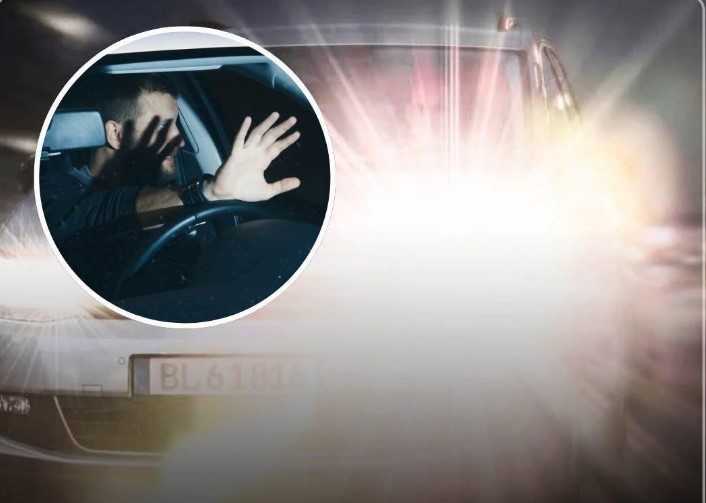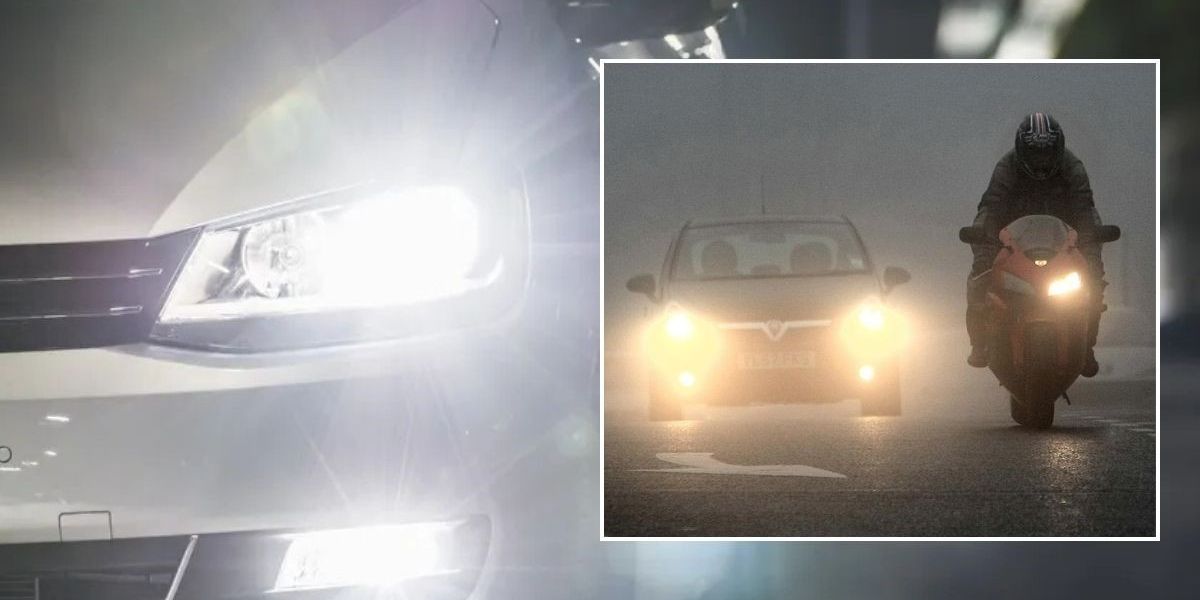
LED headlights are becoming increasingly common in modern vehicles, recognized for their energy efficiency and sleek appearance. However, the bright intensity of these lights has caused growing concern among drivers, with nearly 90% of people reporting that they find LED headlights excessively bright and potentially hazardous. This issue raises questions about the balance between technological advancements and road safety. Despite their benefits, LED headlights are being scrutinized for their impact on other road users, particularly in terms of glare and impaired visibility.
The Rise of LED Headlights
In recent years, LED headlights have replaced traditional halogen bulbs in many new cars due to their advantages. They are not only more energy-efficient but also last longer, providing superior illumination compared to halogen bulbs. This transition has resulted in both aesthetic and functional improvements, as LED headlights produce a bright, natural light that is much closer to daylight, enhancing driver visibility, especially in low-light conditions. Additionally, the compact size of LED bulbs allows automakers to design modern, streamlined headlight shapes that enhance the overall appeal of vehicles.
However, the widespread adoption of LED headlights has sparked ongoing debates about their brightness and potential impact on road safety. While LED technology improves a driver’s ability to see obstacles and navigate at night, its intense brightness has been criticized for creating glare, particularly for oncoming drivers. The concentrated beam pattern, which is a characteristic of LED headlights, can be more problematic than the diffuse light of traditional halogen headlights. This has led to concerns about whether the benefits of LED headlights outweigh the potential risks associated with their use on the road.

Why LED Headlights Are Perceived as Too Bright
The perception that LED headlights are too bright is not without merit. LED lights emit a higher number of lumens compared to halogen bulbs, with lumens being the unit used to measure visible light intensity. While this increase in brightness is beneficial for the driver, it can cause significant glare, especially when viewed by other road users. LED headlights, with their focused beams, direct light precisely ahead, creating concentrated patches of illumination that are harsh on the eyes, particularly in dark conditions.
The color temperature of LED headlights also contributes to the discomfort experienced by other drivers. LEDs typically produce a cooler, bluish light, which may resemble daylight but can be harsh and unsettling for oncoming drivers. Research has shown that this blue-rich light scatters more in the eye, resulting in a phenomenon known as “disability glare,” which can cause temporary blindness. This effect is especially noticeable at night when the eyes are more sensitive to intense light, making the glare more disruptive.
Furthermore, the misalignment of LED headlights exacerbates the issue. When LED headlights are improperly aligned, they can shine directly into the eyes of oncoming drivers, increasing glare and reducing visibility. In many cases, this problem is amplified by the fact that many vehicles on the road are now equipped with LED headlights, and not all of them are adjusted properly. The lack of standardized regulation around headlight alignment and brightness further contributes to the perception that LED headlights are too bright.

The Safety Risks of Bright LED Headlights
The safety risks posed by excessively bright headlights are well-documented. One of the most significant concerns is the potential for temporary blindness, or disability glare, which can occur when intense light overwhelms the eye’s ability to adjust. Even a brief period of vision impairment can have serious consequences on the road. Reduced visibility can delay a driver’s reaction time, making it more difficult to respond to sudden hazards such as pedestrians, cyclists, or other vehicles.
This risk is particularly pronounced on two-lane roads, where oncoming traffic is in close proximity, and the need for immediate reaction is critical. On rural roads, where drivers may already have limited visibility, the glare from LED headlights can be even more dangerous. Weather conditions such as rain, fog, or snow can worsen the effects of glare, as these conditions reflect light back into the driver’s eyes, further impairing visibility.
The impact of bright headlights extends beyond drivers alone. Pedestrians and cyclists are also at increased risk of being overlooked when headlights are too bright. The harsh light from LED headlights can obscure the presence of non-motorized road users, making it harder for drivers to detect them, especially at night or in poor visibility conditions. This poses a broader safety concern for everyone on the road, not just those inside vehicles.

Regulatory Standards and Industry Response
The regulation of headlight brightness is inconsistent across different countries and regions, leading to confusion and challenges for manufacturers. While some regions have set maximum brightness limits for headlights in terms of lumens or lux, these standards vary widely, making it difficult for automakers to comply with all regulations while meeting consumer demand for brighter headlights. The lack of uniform regulations on headlight brightness further complicates the situation and increases the potential for safety hazards.
In response to these concerns, some vehicle manufacturers have begun to implement adaptive lighting systems that can adjust the intensity and angle of the headlights based on the presence of oncoming traffic. These systems use sensors to detect other vehicles and automatically modify the headlights to reduce glare. While adaptive lighting technology shows promise, it remains an optional feature on many vehicles and is not universally available. It remains uncertain whether these systems can fully address the issue of excessive headlight brightness in all driving conditions.
There has also been increased advocacy for stronger regulations regarding headlight brightness and alignment. Safety experts and organizations have called for more rigorous testing and certification processes to ensure that LED headlights meet the necessary safety standards, including proper brightness levels, alignment, and beam patterns. This would help mitigate the safety risks associated with excessively bright headlights while allowing manufacturers to continue to innovate with new lighting technologies.

Expert Insights and Solutions
Experts from both the automotive and optometry fields have weighed in on the issues caused by bright LED headlights. Optometrists highlight the strain that intense light places on the eyes, especially when driving at night, when the pupils are dilated and more sensitive to light. Sudden exposure to a bright light can cause discomfort, temporary vision impairment, and delayed recovery time, all of which pose significant risks to road safety.
Automotive safety experts emphasize the importance of proper headlight design and alignment in preventing these issues. Even the best lighting technology can become a hazard if installed improperly. Misaligned LED headlights that shine directly into the eyes of oncoming drivers can cause significant glare and reduce visibility, leading to dangerous driving conditions. To mitigate this, experts recommend mandatory headlight alignment inspections as part of routine vehicle safety checks.
There are also simple, practical solutions that can help reduce the impact of bright headlights on drivers. For example, drivers can use anti-glare accessories, such as polarized glasses, to reduce the intensity of headlights. Regularly adjusting mirrors to minimize glare from vehicles behind and using the right side of the road as a reference when encountering oncoming traffic can also help. Educating drivers about proper headlight usage and the importance of dimming high beams when approaching other vehicles is crucial in improving road safety for all users.

Conclusion: Finding a Balance Between Technology and Safety
The introduction of LED headlights has revolutionized automotive lighting, offering significant advantages in terms of energy efficiency and improved visibility. However, their bright intensity has raised serious concerns about road safety, with many drivers reporting that they find LED headlights excessively bright and hazardous. The challenges presented by these headlights, from temporary blindness to increased accident risk, highlight the need for a balanced approach that incorporates both technological innovation and safety considerations.
Addressing this issue requires a multifaceted strategy. Manufacturers must continue to innovate with adaptive lighting and ensure that their headlights comply with safety regulations. Policymakers should work toward creating more consistent and enforceable standards for headlight brightness and alignment. Finally, drivers can take practical measures to reduce glare and improve their own safety while driving at night. By combining regulatory efforts, technological advancements, and driver education, it is possible to enjoy the benefits of LED headlights while ensuring the safety of everyone on the road.
Sources:
- National Highway Traffic Safety Administration (NHTSA) – Headlight Safety
- American Optometric Association (AOA) – Light Sensitivity and Vision Health
- Insurance Institute for Highway Safety (IIHS) – Headlight Ratings


